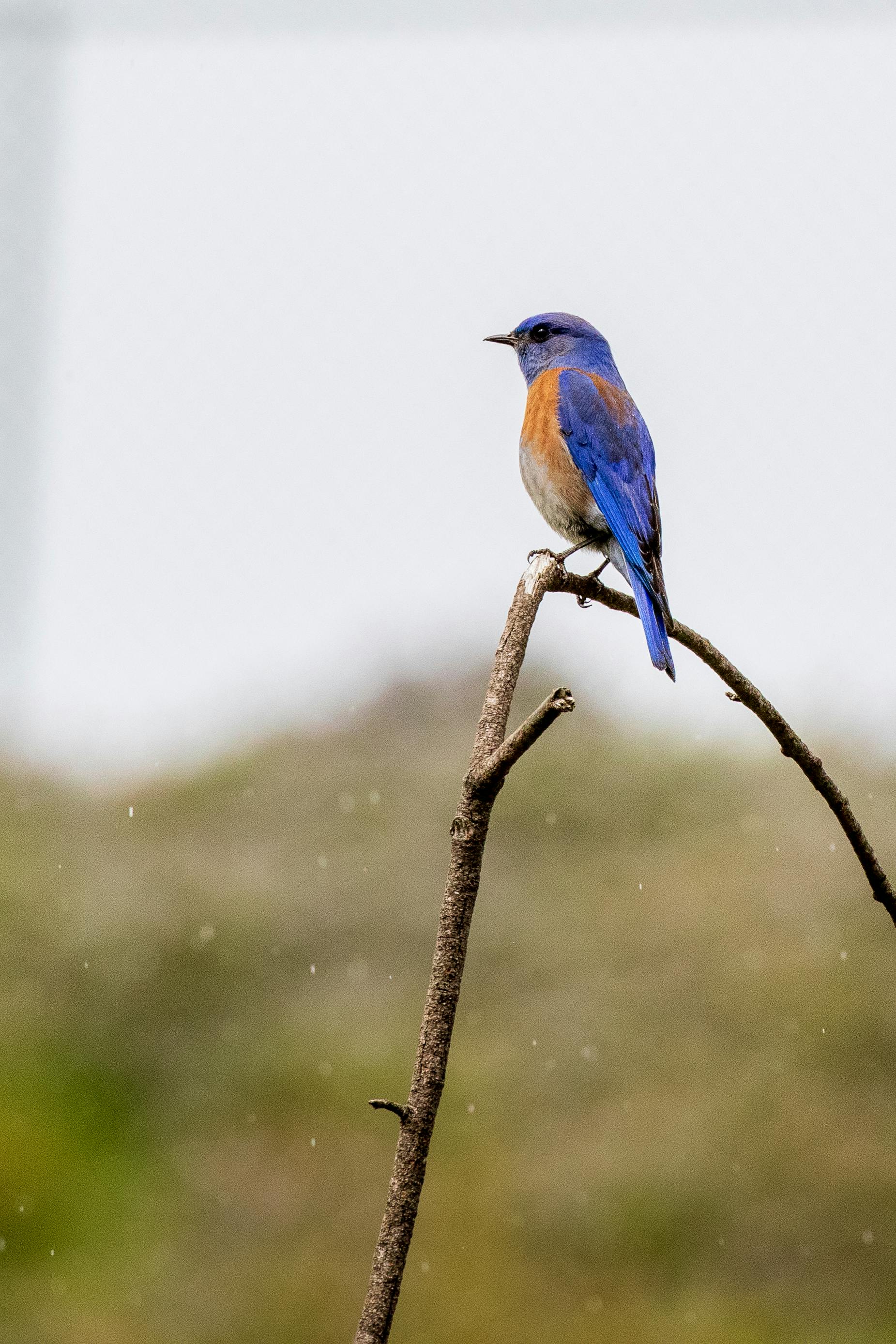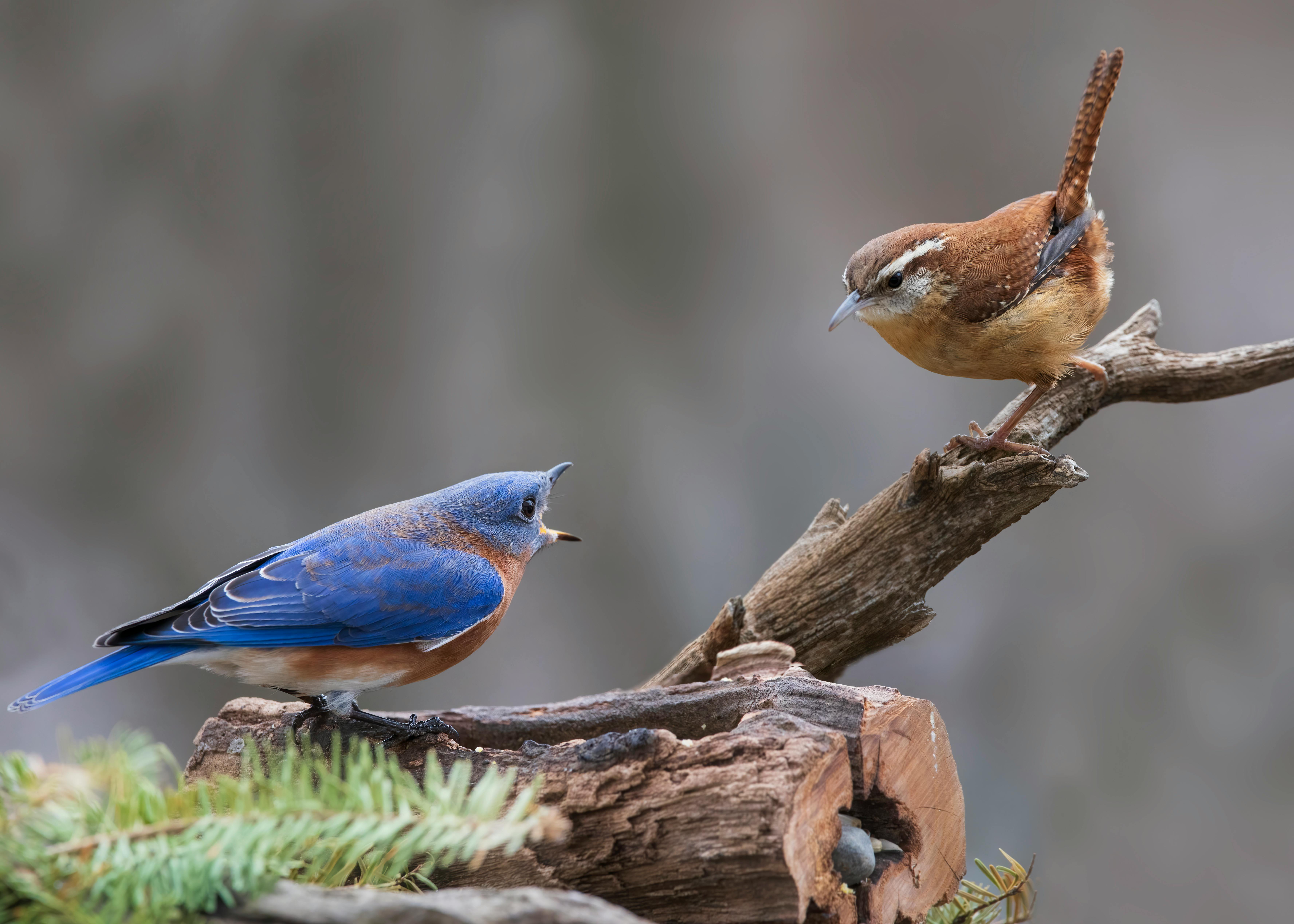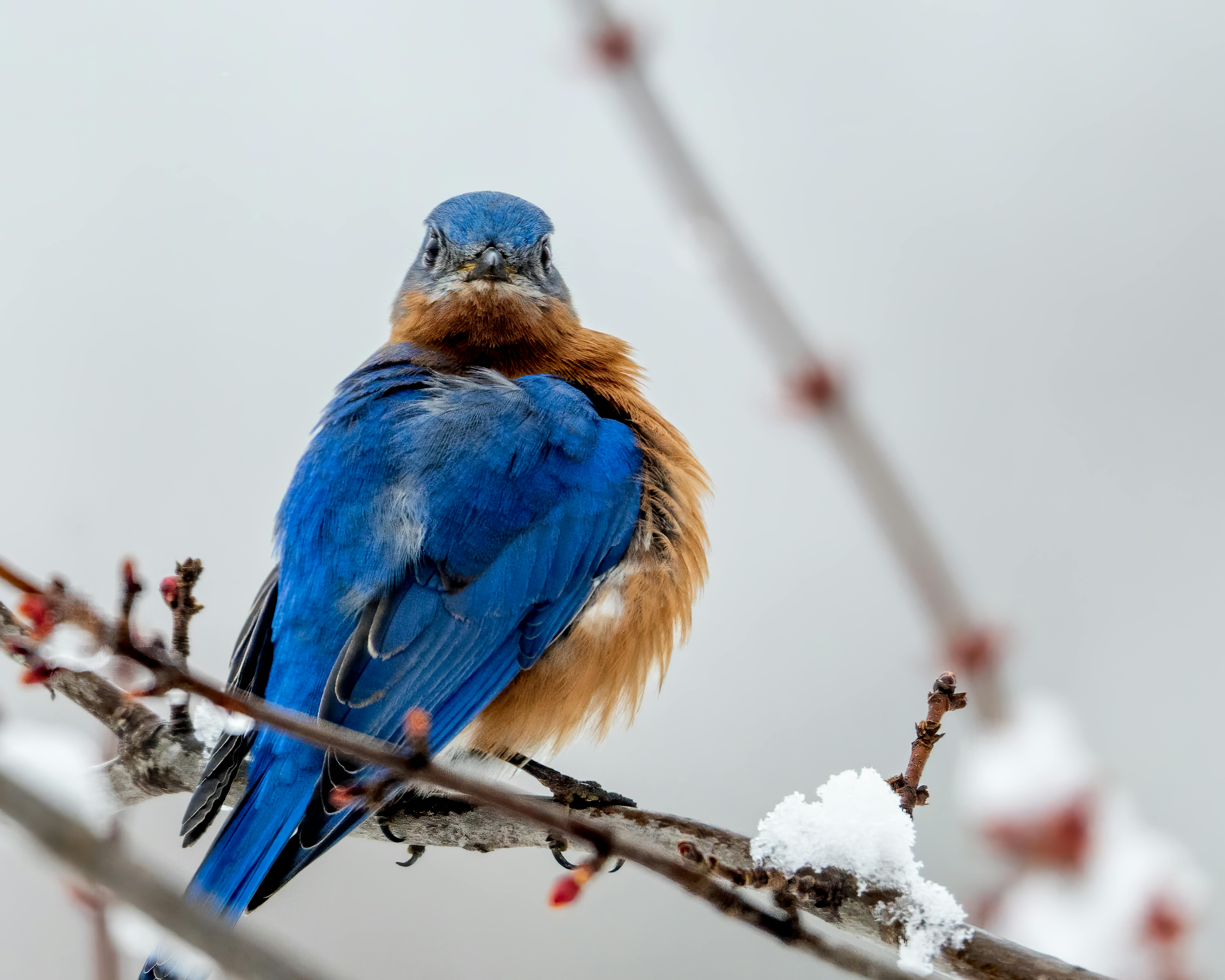If you’ve always dreamed of having beautiful bluebirds grace your yard with their vibrant presence, look no further! We’ve compiled seven valuable tips to help you attract these stunning creatures effortlessly. From providing the perfect nesting boxes to creating a welcoming habitat, you’ll soon find yourself enjoying the delightful company of bluebirds right in your own backyard. So, grab your gardening gloves and get ready to embark on an exciting journey to bring these magnificent birds into your life.
Creating a Suitable Habitat
Providing Natural Food Sources
Attracting bluebirds to your yard starts with providing them with a suitable habitat. One way to do this is by offering natural food sources. Bluebirds primarily feed on insects like caterpillars, beetles, and spiders, so having a diverse range of plants that attract these insects is essential. Avoid using pesticides, as they can harm the insects and ultimately affect the bluebirds’ food supply.
Ensuring Water Availability
Another important aspect of creating a suitable habitat for bluebirds is ensuring water availability. Bluebirds need to have access to clean water for drinking and bathing. Providing a bird bath or a shallow dish with fresh water can attract bluebirds and encourage them to stay in your yard. Make sure to change the water regularly to keep it clean and prevent the spread of diseases.
Offering Nesting Sites
Bluebirds require suitable nesting sites to raise their young. They prefer open areas with some trees or shrubs nearby. Installing nest boxes specifically designed for bluebirds can provide them with a safe and secure place to build their nests. These boxes should have an entrance hole of about 1.5 inches in diameter, be made of durable materials, and have proper ventilation and drainage.
Maintaining Vegetation
Having a well-maintained vegetation in your yard is important for attracting and keeping bluebirds. Planting trees and shrubs that provide both food and shelter is beneficial. Native plants that produce berries or fruits can serve as natural sources of food for bluebirds. Additionally, maintaining a variety of plant species can attract a diverse range of insects, which is essential for the bluebirds’ diet.
Choosing the Right Feeders and Foods
Selecting Bluebird-Specific Feeders
To attract bluebirds to your yard, it is essential to provide them with suitable feeders. Bluebird-specific feeders are designed with small openings that prevent larger birds from accessing the food. These feeders often have a tray or dome to protect the food from rain. By using bluebird-specific feeders, you ensure that bluebirds have easy access to their preferred foods without competition from other bird species.
Using Mealworms
Mealworms are a favorite food of bluebirds and can be an excellent way to attract them to your yard. You can offer live or dried mealworms in a shallow dish or small cup. Bluebirds are particularly attracted to live mealworms, as they resemble the insects they naturally feed on. Place the mealworm feeder near their nesting sites or in areas they frequently visit.
Offering Fruit and Berries
Bluebirds also enjoy eating fruits and berries. You can attract them by placing small pieces of apple or oranges on a platform feeder. Bluebirds will be enticed by the colorful fruits and their sweet aroma. Additionally, planting fruit-bearing trees or shrubs, such as serviceberry or dogwood, can provide a natural food source for bluebirds throughout the year.
Avoiding Harmful Foods
While bluebirds have a diverse diet, it is essential to avoid offering them harmful foods. Avoid providing them with bread, milk, or any processed human food. These items can be difficult for bluebirds to digest and can lead to health problems. Stick to natural foods like mealworms, fruits, and berries that mimic their natural diet.

This image is property of images.pexels.com.
Baffle and Protect Your Nest Boxes
Using Predator Guards
To protect bluebird nest boxes from predators, it is crucial to use predator guards. These guards are placed on the pole or mounting system of the nest box to prevent raccoons, squirrels, and other predators from reaching the eggs or nestlings. Predator guards can be in the form of cones, metal or plastic baffles, or even a slippery metal predator disk.
Installing Baffles
Baffles are another effective way to safeguard bluebird nest boxes. These cone-shaped devices are mounted underneath the nest box or on the pole, further deterring predators from climbing up. When installing baffles, make sure they are large enough to prevent predators from reaching around or over them.
Securing Nest Boxes
Properly securing your bluebird nest boxes is vital to avoid any accidents or damage. Use sturdy mounting systems, such as metal poles or wooden posts, ensuring they are firmly installed in the ground. Check the stability of the nest boxes regularly and make any necessary repairs promptly to keep them secure and safe for the bluebirds.
Preventing Other Bird Species from Taking Over
Bluebirds face competition from other bird species for nesting sites. To prevent other birds from taking over the bluebird nest boxes, make sure the entrance hole size is specific to bluebirds. This will deter larger birds from entering. Monitoring the nest boxes regularly and removing any unwanted nests can also help keep bluebirds as the primary inhabitants.
Providing Adequate Shelter
Planting Trees and Shrubs
Creating a suitable habitat for bluebirds involves providing adequate shelter. Planting trees and shrubs in your yard not only enhances its beauty but also serves as a shelter for the bluebirds. Trees like oak, dogwood, and pine provide perches and nesting sites, while shrubs like holly or viburnum offer protection and cover from predators.
Creating Brush Piles
Brush piles are another simple way to provide shelter for bluebirds. These piles can be made by stacking fallen branches, twigs, and leaves in a designated area of your yard. Bluebirds can seek refuge in these piles during extreme weather conditions or when they need a safe place to retreat.
Building Roost Boxes
Roost boxes are beneficial for bluebirds, particularly during the colder months. These boxes provide a warm shelter for bluebirds to roost in and help them conserve energy. Roost boxes can be placed near their nesting sites or in areas where they frequent. Ensure that the roost boxes have proper ventilation and drainage to maintain a healthy environment.
Offering Suitable Perches
Bluebirds prefer perching in open areas with a clear view of their surroundings. Providing suitable perches, such as wooden posts or natural branches, can attract bluebirds to your yard. Place the perches near their feeding areas or close to their nesting boxes to encourage them to stay and feel safe in your yard.

This image is property of images.pexels.com.
Maintaining a Clean and Safe Environment
Regularly Cleaning Feeders and Nest Boxes
Maintaining a clean environment is crucial for the health and wellbeing of bluebirds. Regularly clean your feeders and nest boxes to prevent the buildup of bacteria or mold. Use a mild detergent and warm water to clean feeders, ensuring they are thoroughly rinsed and dried before refilling. Nest boxes should be cleaned out after each nesting cycle to remove any debris or parasites.
Avoiding Pesticides
Pesticides can be harmful to bluebirds and their food sources. Avoid using chemical pesticides on your yard or garden, as they can contaminate the insects that bluebirds rely on for food. Instead, opt for natural pest control methods, such as companion planting or introducing beneficial insects, to maintain a healthy ecosystem.
Removing Hazards
Make sure your yard is free from any hazards that may pose a threat to bluebirds. Clear away any sharp objects, such as nails or broken glass, that could cause injury. Keep your yard free of excessive clutter or debris that may attract predators or hinder the bluebirds’ movements. Regularly inspect your yard for potential hazards and address them promptly.
Monitoring the Health of Bluebirds
Observing the health of bluebirds in your yard is essential for their wellbeing. Be on the lookout for signs of illness or distress, such as lethargy, abnormal feather loss, or labored breathing. If you notice any concerning symptoms, contact your local wildlife rehabilitation center or avian veterinarian for guidance on treatment or further action.
Using Bluebird-Specific Nest Boxes
Choosing an Appropriate Size and Design
When selecting nest boxes for bluebirds, choose ones that are designed specifically for their needs. Bluebird nest boxes typically have a small entrance hole of about 1.5 inches in diameter, which helps deter larger and more aggressive bird species. The interior dimensions should be large enough to accommodate a bluebird family comfortably.
Positioning the Nest Box Correctly
Properly positioning the nest box is crucial for attracting bluebirds. Place the nest box approximately 4 to 6 feet off the ground, facing away from prevailing winds and direct sunlight. Facing the entrance hole towards a tree or shrub can provide cover and a perch for the bluebirds. Avoid placing nest boxes too close to each other, as bluebirds prefer some distance between their nesting territories.
Providing Sufficient Ventilation
Adequate ventilation is necessary to maintain a healthy environment inside the nest box. Bluebird nest boxes should have ventilation holes or gaps near the top to ensure proper airflow. Ventilation helps regulate temperature and humidity levels, preventing the buildup of moisture that can lead to mold or fungal growth.
Including Proper Drainage
Proper drainage is essential to prevent water from accumulating inside the nest box. Include drainage holes in the bottom of the nest box to allow excess moisture to escape. Ensuring good drainage helps keep the nest dry and prevents the growth of bacteria or parasites that can harm the bluebirds.
Offering Nesting Material Assistance
Providing Soft Nesting Material
Bluebirds use soft materials, such as grass, pine needles, and feathers, to build their nests. You can assist them by providing these materials in your yard. Leave grass clippings or small piles of twigs and leaves in a designated area to allow bluebirds to gather materials easily. Ensure that the nesting material is clean and free from any harmful substances.
Including Suitable Materials
Offering suitable nesting materials to bluebirds can enhance their nest-building process. Soft, natural materials like pet fur, horse hair, or wool can be left out for them to incorporate into their nests. However, make sure the materials are clean and free of any chemicals or toxins that could harm the bluebirds or their young.
Avoiding Harmful Substances
When offering nesting material assistance, it is essential to avoid any harmful substances. Do not provide materials that have been treated with pesticides or chemicals, as these can be toxic to bluebirds. Stick to natural materials that are clean and safe for them to use.
Refreshing Nesting Material Periodically
Bluebirds may build multiple nests throughout the breeding season. To help them, refresh the nesting materials periodically. Replace old, soiled materials with fresh ones to ensure the bluebirds have access to clean and soft nesting materials. This simple act can encourage them to continue nesting in your yard.
Implementing Bluebird-Friendly Landscaping
Including Native Plants
Native plants are essential for attracting bluebirds to your yard. They provide a familiar and abundant food source, as well as cover and shelter. Research native plant species in your area and incorporate them into your landscaping. Plants like black-eyed Susan, goldenrod, or coneflower can attract insects, which in turn, attract bluebirds.
Offering a Variety of Plant Species
A diverse range of plant species will attract a diverse range of insects, which is crucial for bluebirds’ food supply. Incorporate a variety of plants with different bloom times, heights, and structures. This variety will provide bluebirds with a consistent source of food throughout the year and make your yard more appealing to them.
Creating Plant Diversity
Creating plant diversity not only benefits bluebirds but also contributes to overall ecosystem health. By planting a mix of flowers, shrubs, and trees, you can support a wide range of wildlife, including beneficial insects and pollinators. A diverse landscape creates a balanced and resilient ecosystem, which is crucial for bluebird conservation.
Attracting Insects as Food Sources
To attract bluebirds, it is essential to provide a bountiful supply of insects for them to feed on. Incorporate plants that have a high insect-attracting capacity, such as milkweed, butterfly weed, or native grasses. These plants will not only provide a food source for the bluebirds but also attract other beneficial insects to your yard.
Understanding Bluebird Behavior
Getting Familiar with Their Feeding Habits
To attract bluebirds successfully, it is essential to understand their feeding habits. Bluebirds primarily feed on insects, so having a yard with a good insect population is crucial. By providing natural food sources and avoiding pesticide use, you can create an environment that supports their feeding habits.
Observing Mating and Nesting Behavior
Bluebirds have distinctive mating and nesting behaviors. Observing these behaviors can give you valuable insights into their nesting preferences and allow you to provide suitable conditions. Look for courtship displays, such as male bluebirds singing or bringing food to the female. Once nesting begins, observe their nesting site selection and monitor their progress throughout the breeding season.
Knowing Their Migration Patterns
Understanding the migration patterns of bluebirds can help you anticipate their arrival and departure. Bluebirds are migratory birds, and their movements can vary based on geographic location. Research the typical migration patterns in your region to ensure you are prepared to provide suitable habitat and resources when they return in the spring and fall.
Recognizing Vocalizations and Sounds
Bluebirds have distinctive vocalizations and sounds that can help you identify their presence. Familiarize yourself with their calls, songs, and alarm sounds. By recognizing these vocalizations, you can locate bluebirds in your yard and be aware of any potential threats or disturbances.
Engaging in Bluebird Conservation Efforts
Participating in Citizen Science Projects
Citizen science projects provide opportunities for individuals to contribute to scientific research and conservation efforts. Get involved in bluebird-specific citizen science projects, such as monitoring populations, recording nest box data, or reporting sightings. By participating, you can contribute valuable data that helps researchers understand and protect bluebirds.
Joining Bluebird Monitoring Programs
Bluebird monitoring programs offer a more hands-on approach to bluebird conservation. These programs involve monitoring nest boxes, conducting population surveys, or providing habitat management. Joining a local bluebird monitoring program allows you to actively contribute to their conservation and connect with like-minded individuals.
Supporting Bluebird Preservation Organizations
There are numerous organizations dedicated to the preservation and conservation of bluebirds. Supporting these organizations through donations or volunteering can have a significant impact on bluebird populations. These organizations often work towards habitat restoration, education, and research, helping ensure the long-term survival of bluebirds.
Educating Others about Bluebird Conservation
Sharing your knowledge and passion for bluebird conservation is an effective way to make a difference. Educate others about bluebirds, their importance in ecosystems, and the actions they can take to help protect them. By spreading awareness and inspiring others to get involved, you contribute to a collective effort in bluebird conservation.
In conclusion, attracting bluebirds to your yard requires creating a suitable habitat, providing the right feeders and foods, protecting nest boxes, offering shelter, maintaining a clean and safe environment, using bluebird-specific nest boxes, providing nesting material assistance, implementing bluebird-friendly landscaping, understanding bluebird behavior, and engaging in conservation efforts. By following these tips and investing time and effort, you can create an inviting space for bluebirds and contribute to their conservation.
[/et_pb_text][/et_pb_column][/et_pb_row][/et_pb_section]


